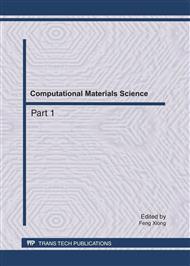p.1168
p.1173
p.1179
p.1184
p.1188
p.1194
p.1200
p.1205
p.1211
Optimal Algorithm of Shuffled Frog Leaping Based on Immune Evolutionary Particle Swarm Optimization
Abstract:
In order to avoid premature convergence and improve the precision of solution using basic shuffled frog leaping algorithm (SFLA), based on immune evolutionary particle swarm optimization, a new shuffled frog leaping algorithm was proposed. The proposed algorithm integrated the global search mechanism in the particle swarm optimization (PSO) into SFLA, so as to search thoroughly near by the space gap of the worst solution, and also integrated the immune evolutionary algorithm into SFLA making immune evolutionary iterative computation to the optimal solution in the sub-swarm, so as to use the information of optimal solution fully. This algorithm can not only free from trapping into local optima, but also close to the global optimal solution with the higher precision. Calculation results show that the immune evolutionary particle swarm shuffled frog leaping algorithm (IEPSOSFLA) has the optimal searching ability and stability all the better than those of basic SFLA.
Info:
Periodical:
Pages:
1188-1193
Citation:
Online since:
July 2011
Authors:
Price:
Сopyright:
© 2011 Trans Tech Publications Ltd. All Rights Reserved
Share:
Citation:


